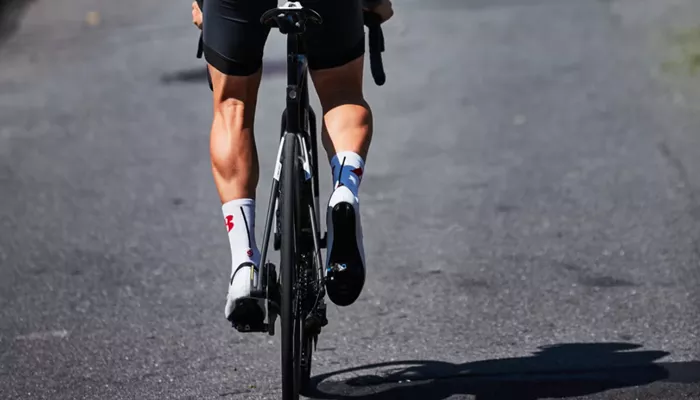High resistance cycling is an intense form of exercise that has gained popularity among fitness enthusiasts. While cycling is often associated with cardiovascular fitness and endurance, many wonder whether high resistance cycling can also contribute to muscle growth. This article will delve into the mechanisms of high resistance cycling and its impact on muscle development, providing a comprehensive look at how it affects the muscles in the lower body and beyond.
Understanding High Resistance Cycling
High resistance cycling involves pedaling against increased resistance, which can be achieved through various means such as adjusting the bike’s resistance settings or using specialized equipment. This method of cycling is distinct from traditional, lower-resistance cycling that focuses primarily on endurance and cardiovascular benefits.
The Mechanics of High Resistance Cycling
When you engage in high resistance cycling, you are essentially forcing your muscles to work harder than they would under normal conditions. This increased effort is due to:
Increased Load:
The resistance applied makes each pedal stroke more challenging, requiring greater force and effort from your muscles.
Reduced Speed:
With higher resistance, your pedaling speed decreases, allowing more time for each muscle contraction.
These factors combine to create a demanding workout that can potentially lead to muscle growth, provided other conditions are met.
Muscle Groups Targeted by High Resistance Cycling
High resistance cycling primarily targets several muscle groups, with a focus on the lower body. The main muscles worked include:
Quadriceps
The quadriceps, or quads, are the large muscles on the front of the thighs. During high resistance cycling, these muscles are heavily engaged to push the pedals down against the resistance. Repeated contractions and the increased load lead to muscle fatigue and, over time, strength and growth.
Hamstrings
The hamstrings, located at the back of the thighs, work in conjunction with the quadriceps. They help to pull the pedals up and assist in stabilizing the knee joint during high resistance cycling. This constant engagement contributes to muscle development in the hamstrings.
Glutes
The gluteal muscles, or glutes, are critical in cycling. They help extend the hip joint, which is crucial for powerful pedal strokes. High resistance cycling places significant demand on the glutes, leading to muscle strengthening and growth.
Calves
The calves, or gastrocnemius and soleus muscles, are involved in the pedaling motion, particularly during the push-off phase. High resistance cycling increases the workload on these muscles, promoting growth and strength.
How High Resistance Cycling Promotes Muscle Growth
Muscle growth, or hypertrophy, occurs through a process of muscle stress and recovery. High resistance cycling contributes to muscle growth through the following mechanisms:
Increased Muscle Tension
High resistance cycling generates greater muscle tension compared to low resistance cycling. This increased tension causes micro-tears in the muscle fibers, which, when repaired, leads to muscle growth.
Enhanced Muscle Recruitment
The greater resistance forces the recruitment of more muscle fibers, including those that are usually not engaged during lower resistance workouts. This increased fiber recruitment contributes to overall muscle development.
Progressive Overload
To build muscle, the principle of progressive overload must be applied. High resistance cycling naturally incorporates this principle by challenging the muscles to adapt to increasing levels of resistance. Over time, as the resistance is adjusted upward, the muscles are forced to grow stronger.
SEE ALSO: How Long Should You Bike for to Lose Weight?
Comparing High Resistance Cycling to Other Forms of Strength Training
While high resistance cycling can contribute to muscle growth, it is different from traditional strength training methods such as weightlifting. Here’s how they compare:
Resistance Training
Traditional resistance training, like weightlifting, involves lifting heavy weights with fewer repetitions. This method is highly effective for building muscle mass due to the high level of mechanical tension and muscle strain.
Cycling Resistance
High resistance cycling, on the other hand, involves a lower level of weight but sustained muscle engagement over time. It can build muscle endurance and strength, particularly in the lower body, but may not lead to the same level of hypertrophy as weightlifting.
Practical Tips for Maximizing Muscle Growth Through High Resistance Cycling
To optimize muscle growth through high resistance cycling, consider the following strategies:
Adjust Resistance Levels
Increase the resistance gradually to ensure progressive overload. Aim to challenge your muscles without causing excessive strain or risking injury.
Incorporate Interval Training
High resistance interval training, which alternates between high and low resistance, can be effective for muscle growth and overall fitness. This approach provides both intense muscle engagement and recovery periods.
Focus on Form
Maintain proper cycling form to maximize the effectiveness of your workout and reduce the risk of injury. Proper form ensures that the targeted muscles are engaged correctly.
Allow for Recovery
Muscle growth occurs during recovery periods. Ensure you allow adequate time for muscle repair and growth by incorporating rest days into your training routine.
Combine with Other Exercises
To achieve balanced muscle development, consider combining high resistance cycling with other forms of strength training and flexibility exercises. This combination will address different muscle groups and contribute to overall fitness.
Conclusion
High resistance cycling is a valuable exercise method for building muscle, particularly in the lower body. By increasing muscle tension, enhancing muscle recruitment, and applying progressive overload, high resistance cycling can lead to significant muscle growth and strength improvements. While it may not fully replace traditional resistance training methods, it serves as an effective complement and offers unique benefits.
For those looking to build muscle while enjoying the cardiovascular benefits of cycling, incorporating high resistance cycling into your fitness routine can be a powerful strategy. Remember to adjust resistance levels, focus on proper form, and allow for adequate recovery to maximize your results.

